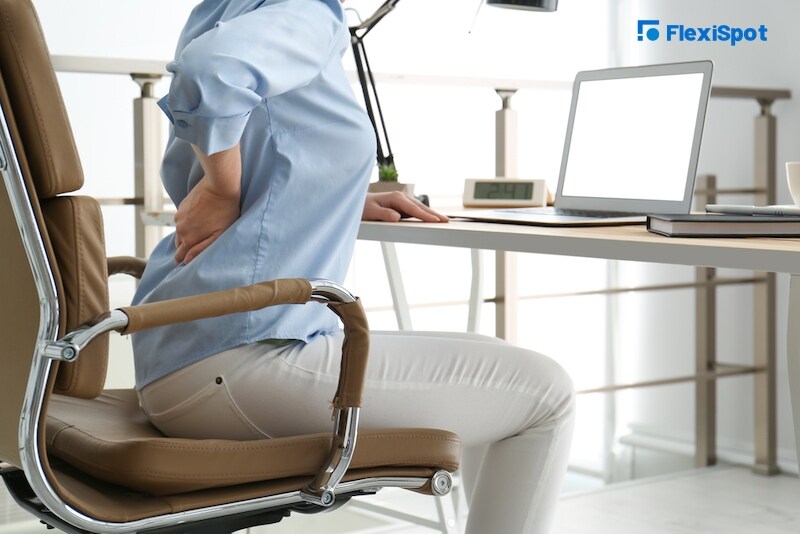Musculoskeletal and mental health disorders are becoming increasingly common in a workplace setting. While there are no exact statistics on what percentage of employees experience musculoskeletal and mental health disorders in the workplace, enough evidence shows musculoskeletal and mental health disorders are a leading cause of lost job days and productivity. Moreover, musculoskeletal and mental health disorders are also associated with an increased need for health care, disability, and workers’ compensation costs.
In this post, we look at four musculoskeletal and mental health disorders that are largely prevalent in workplaces and what controls and measures can improve the incidence of these conditions. However, before we get into the details, let’s look at what musculoskeletal and mental health disorders are and how stress can induce physiological changes in a person's body that can increase the risk of developing a musculoskeletal disorder.
What are Musculoskeletal and Mental Health Disorders?
Musculoskeletal conditions are typically classified as injuries like sprains and strains associated with irregular movements and awkward positions. But there is increasing evidence that suggests that psychological risk factors such as stress at work, job demands, and control can significantly increase the risk of musculoskeletal disorders.
Moreover, work-related stress leads to adverse effects on individuals' cognition, leading to mental health disorders, including anxiety and depression.
Furthermore, musculoskeletal disorders and mental health concerns cannot be isolated as the two are intertwined. Persistent musculoskeletal concerns can lead to mental health conditions. Similarly, mental health disorders can also be one of the potential causes of musculoskeletal disorders.
Musculoskeletal disorders can be classified into three categories, namely:
Upper limb conditions,
Lower limb conditions and
Back pain.
Mental health disorders are an umbrella term that covers mental health problems and mental illnesses, ranging from anxiety disorders and depression to behavioral disorders, such as OCD and eating disorders. While mental health disorders encompass a wide range of conditions, anxiety, and depression are some of the most common mental health conditions prevalent in a workplace setting.
How Stress Induces Physiological Change that Increases the Risk of Musculoskeletal Disorders
While it is difficult to attribute workplace stress as the only cause of musculoskeletal disorders, there is a general agreement that workplace stress can significantly contribute to physiological changes. Some of the stress-related physiological changes that can contribute to an increased risk of musculoskeletal disorders include the following.
|
Stress-Induced Physiological Changes |
Associated Musculoskeletal Disorder |
|
Increased Blood Pressure |
Increased pressure in narrower joints, such as carpal tunnel can lead to carpal tunnel syndrome. |
|
Increased Muscle Tension |
Causes increased pressure around joints and nerves that leads to muscle spasms and restricted movement. |
|
Pupil Dilation |
Increases light sensitivity which can negatively affect eyesight. |
|
Heightened State of Fight or Flight |
Increased adrenaline rush in the bloodstream can increase alertness, which can overburden the musculoskeletal system. |
4 Common Musculoskeletal and Mental Health Disorders in the Workplace
Now that you know how musculoskeletal and mental health disorders are interrelated and how stress can increase the risk of musculoskeletal disorders, let's look at some of the most common musculoskeletal and mental health disorders in the workplace.
#1. Carpal Tunnel Syndrome
Carpal tunnel syndrome is one of the most common repetitive stress injuries that employees face today, with an average of 900,000 new cases reported annually in the U.S. only. The condition is associated with the compression of the nerve at the wrist that leads to numbness and weakness in the hands and fingers. Moreover, individuals with this condition can also experience tingling, muscle atrophy, and difficulty in gripping. It is also common for individuals with carpal tunnel syndrome to experience unexplained sensations in the hand and fingers.
While carpal tunnel syndrome can be caused by a wide range of factors, it is considered a workplace illness in some states. Employees working with old equipment that's not ergonomically designed are more likely to experience this condition. Moreover, employees engaging in repetitive tasks also have a much higher risk of developing carpal tunnel syndrome.
#2. Back Pain
Another common musculoskeletal concern that can be associated with the workplace is back pain. Around 80% of people experience back pain at some point in their lives, which is one of the most common reasons for visiting healthcare practitioners. While it is a musculoskeletal disorder that is closely linked to awkward movements, sudden jerks, and heavy lifting, workplace setting is another common cause of this condition.
Since employees spend long hours sitting on their desks at work, back pain is common. Moreover, it is particularly more prevalent in workplace settings that are not ergonomically designed. As a result, backache is the only outcome when employees spend long hours in poor posture and uncomfortable positions.
Back pain is one of the most common musculoskeletal disorders responsible for absence from work and is considered a common workplace-related musculoskeletal disorder.
#3. Arthritis
The medical term arthritis is another umbrella term used to describe several conditions and diseases affecting the joints and the connecting tissues. Arthritis is a leading cause of disability in the U.S. Moreover, it is one of the musculoskeletal conditions that can severely limit the activity of individuals.
Arthritis is considered a workplace-related musculoskeletal condition as it may develop as a result of work-related conditions. Lifting heavy weights and prolonged periods of sitting in poor posture are among the leading causes of this condition. Hence, certain occupations associated with an increased risk of arthritis, specifically for knee joint or hip joint, include mining and construction and service industry.
#4. Anxiety and Depression
Work is a great form of mental exercise, but certain work arrangements can have a negative effect on how you think and feel. As a result, it can hamper your ability to function well both at work and at home.
While anxiety and depression cannot be solely regarded as mental health disorders specifically related to the workplace, there may be several risk factors for mental health that may be present in the workplace. Some of these risks may be related to the type of work, but they can also be related to the organizational environment and employee relationships. Moreover, the risk of developing work-related anxiety and depression can also be linked to the type of support offered to the employees.
3 Measures to Reduce the Incidence of Musculoskeletal and Mental Health Disorders in Workplace
Now that you already know about the four most common musculoskeletal and mental health disorders in the workplace, let's look at a few measures to improve these health conditions.
#1. Improved Ergonomics
One of the best ways to reduce the incidence of musculoskeletal problems in the workplace is to invest in ergonomic workplace equipment. The goal of ergonomic workplace solutions is to prevent and control workplace-related musculoskeletal problems resulting from poor posture. Hence, businesses must invest in ergonomic solutions such as ergonomic office chairs. One of the best ergonomic chairs that you can find on the market is the Flexispot Ergonomic Office Chair OC3B, which offers reliable, ergonomic support and facilitates proper posture maintenance as you work both at home or in your office.
Moreover, for businesses that require their employees to sit for long hours, it is also good to invest in height adjustable standing desks that can significantly reduce the incidence of musculoskeletal problems associated with prolonged sitting.
#2. Improved Support to Employees
Many employees experience mental disorders in the workplace due to a lack of support from their organization. One of the possible ways to reduce the incidence of mental health conditions at the workplace is to offer support to employees. Businesses can invest in counseling that can help their employees deal with emotional stressors. Moreover, businesses can also invest in team-building so employees can learn to trust and support each other.
#3. Focus on Maintaining Work-Life Balance
Lastly, businesses must create opportunities for their employees so they can learn to maintain a work-life balance. It is particularly important for employees working in industries that offer remote work arrangements. Work from home seems like a never-ending task and leads to several musculoskeletal and mental health concerns.
Conclusion
Musculoskeletal and mental health disorders are a leading cause of lost job days and employee productivity. Moreover, musculoskeletal and mental health disorders are also closely linked with an increased need for health care and workers' compensation costs. While we have discussed four common musculoskeletal and mental health disorders in a workplace setting, there may be several other health conditions that can result from stress and poor ergonomics. To make sure that the employees stay healthy both physically and mentally, the employers need to provide the right ergonomic support to the employees while providing them enough opportunities to maintain a healthy work-life balance.







